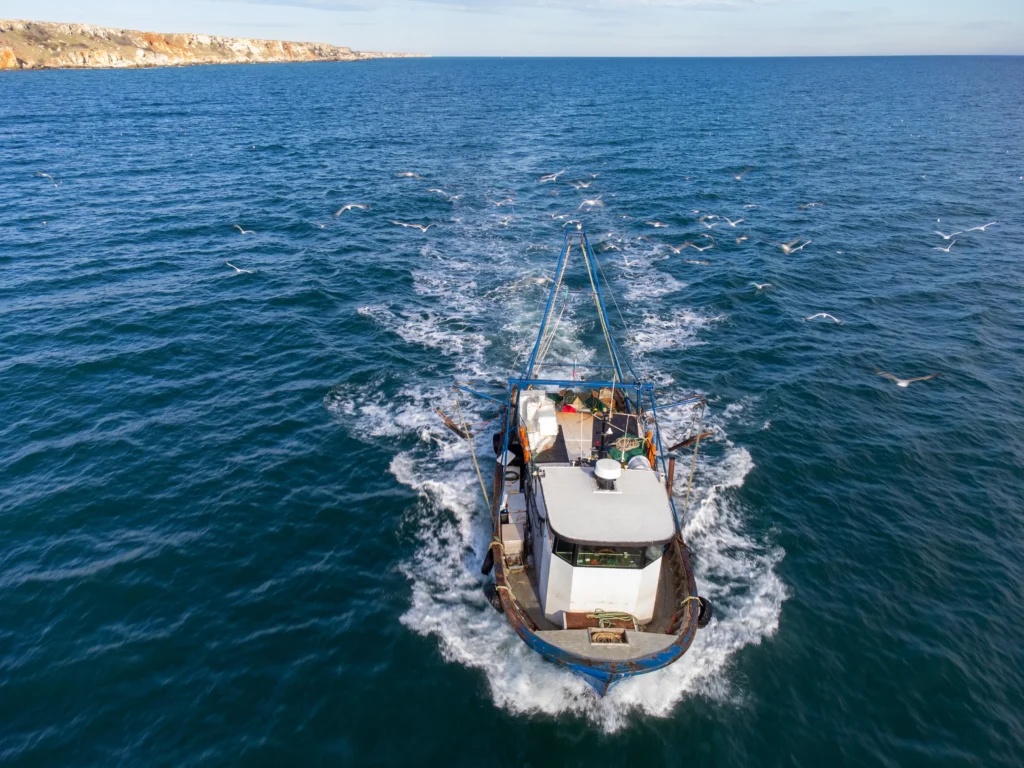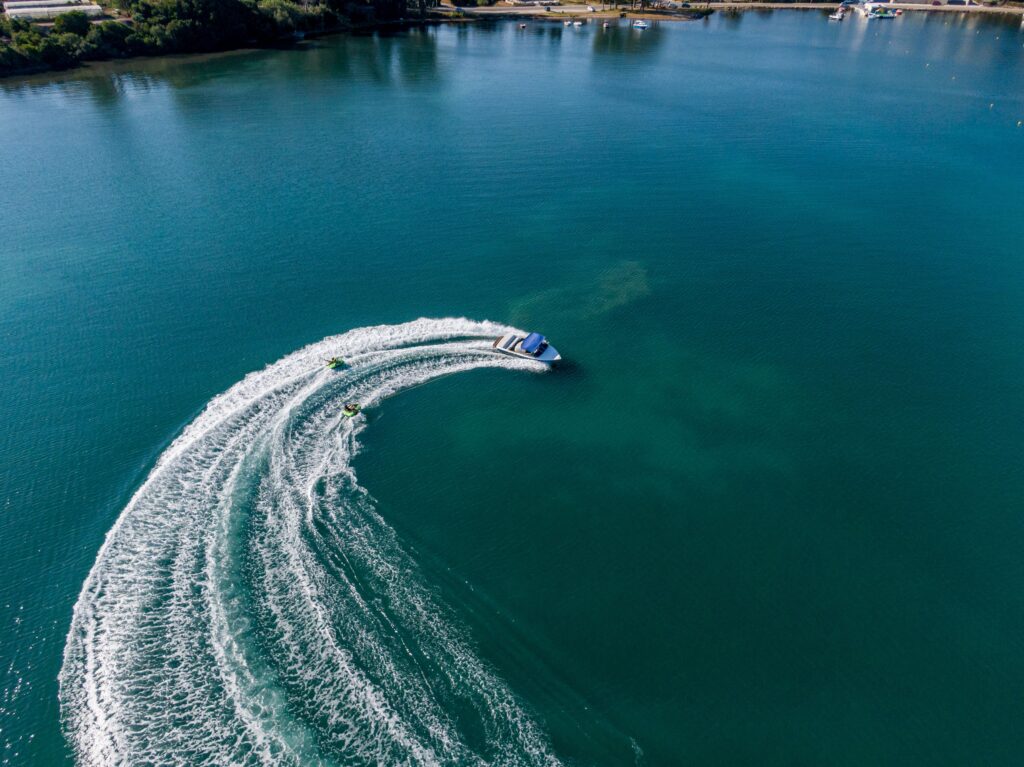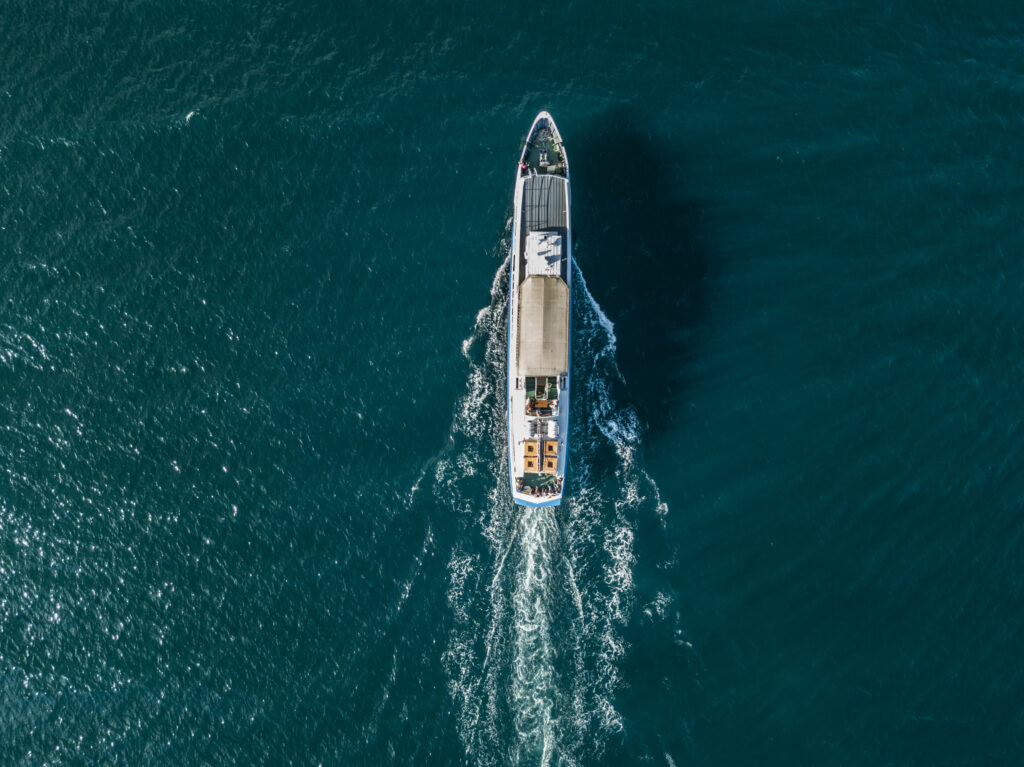If you’ve spent time around fishing boats or marine service centers, you may have heard the term “divots” used in conversation. But what are divots on a fishing boat, and why do they matter?
While the word “divot” is more commonly associated with golf, in the boating world, it refers to small dents, gouges, or irregular surface marks in a boat’s hull, deck, or gel coat. These blemishes can be cosmetic or structural and often raise questions for boat owners regarding safety, performance, and resale value.
This article will break down what divots are, how they’re caused, why they matter, and what to do about them—especially if you’re shopping for a fishing boat and want to understand the condition and value of what you’re buying.

Understanding Divots on a Fishing Boat
In the marine context, divots are indentations or damaged areas on a boat’s surface. They may appear:
- On the fiberglass hull
- Along the gel coat finish
- Near high-impact zones such as the bow, transom, or gunnel
- Around deck fittings, rod holders, or cleats
These divots vary in depth, size, and severity. Some are barely noticeable and purely cosmetic, while others may penetrate through protective layers and threaten structural integrity.

What Causes Divots on a Boat?
Divots can develop for several reasons:
- Impact with docks or other boats – Even a gentle nudge at the wrong angle can leave a small dent in the fiberglass.
- Improper trailer loading – If a boat isn’t seated correctly on the trailer bunks or rollers, pressure points may form.
- Dropped gear or heavy equipment – Tools, coolers, or batteries dropped during transport or maintenance can leave a mark.
- Manufacturing flaws or thin spots in the gel coat – In rare cases, factory inconsistencies lead to surface weakness.
- Wear and tear in heavily used areas, such as foot traffic zones on the casting deck or leaning posts.
Understanding what caused a divot can help determine whether it’s just cosmetic or a sign of something deeper.

Cosmetic vs. Structural Concerns
The key question when examining divots on a fishing boat is whether they compromise safety or longevity.
- Cosmetic divots are typically shallow, located in the gel coat or non-slip surface. They don’t affect performance or hull integrity.
- Structural divots may expose the fiberglass or core material beneath the gel coat. Left untreated, they can allow water intrusion, delamination, or even rot in certain hull designs.
If you’re unsure whether a divot is superficial or a sign of damage, it’s best to consult a marine surveyor or fiberglass technician. Even seemingly minor marks could conceal moisture or prior repairs.

Divots and Resale Value
If you’re buying or selling a fishing boat, divots matter. Pre-purchase inspections often note hull imperfections, and a boat with numerous or unaddressed divots may raise concerns:
- Buyers might question how the boat was used or maintained
- Lenders and insurers may require a marine survey if damage is suspected
- Resale value may be reduced depending on repair costs or cosmetic flaws
At Float Finance, we help our clients understand what to look for when financing a used boat. Surface condition, repair history, and visual inspection are all part of a smart buying process. If you’re financing a used vessel, we often recommend having a pre-purchase inspection done by a professional.

How to Repair Divots on a Fishing Boat
Fortunately, many divots can be repaired with gel coat patch kits or fiberglass filler, depending on their depth and location. Common repair steps include:
- Clean the area thoroughly to remove salt, grime, and oxidation
- Sand the divot lightly to roughen the surface for adhesion
- Apply gel coat or epoxy filler as needed
- Allow to cure, then sand smooth
- Buff and polish to blend with the surrounding finish
Larger or deeper divots may require professional fiberglass repair, especially if located below the waterline or in structurally important areas.

When to Walk Away from a Boat with Divots
While small imperfections shouldn’t be a dealbreaker, numerous or recurring divots might signal abuse, neglect, or improper storage. Walk away or renegotiate if:
- The divots expose raw fiberglass or coring
- Moisture readings around the divots are high
- There are signs of delamination, blistering, or previous failed repairs
- The seller cannot explain the cause or show repair documentation
In such cases, financing may still be available—but it’s important to adjust the value of the loan and factor in repair costs. We can help with that.

Preventing Divots on Your Own Boat
If you already own a fishing boat or plan to, prevention is key. Here’s how to avoid unnecessary damage:
- Use fenders at all times when docking
- Store your boat on properly fitted trailer bunks
- Install non-skid mats or foam decking in high-traffic areas
- Secure all heavy items during travel
- Avoid dropping gear on the deck or transom
A little mindfulness goes a long way in maintaining your boat’s appearance and value.

Financing Repairs or Upgrades
Sometimes divots are a sign it’s time to upgrade. If you’re looking to refinance your existing boat loan to cover repairs or gear upgrades, we offer tailored loan solutions that can include:
- Hull repair costs
- Gel coat restoration
- Engine upgrades
- Custom fishing accessories
Visit our boat financing page to learn how to structure your loan with long-term care in mind. Whether you’re buying new or improving what you have, we’re here to support every step of boat ownership.
Conclusion
So, what are divots on a fishing boat? They’re signs of use, accidents, or environmental wear—ranging from harmless blemishes to potentially serious structural issues. Understanding what to look for, how to assess them, and how to fix or avoid them is part of being a smart, capable boater.
When buying a used fishing boat, be sure to evaluate surface condition closely—and if you’re ever unsure, ask a pro to inspect it. At Float Finance, we help boaters navigate these decisions confidently, ensuring your investment is seaworthy, secure, and suited for the long haul.
